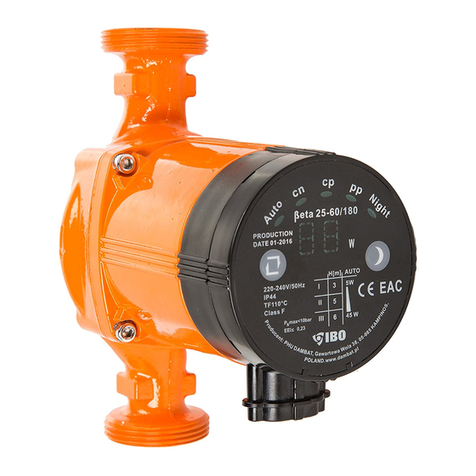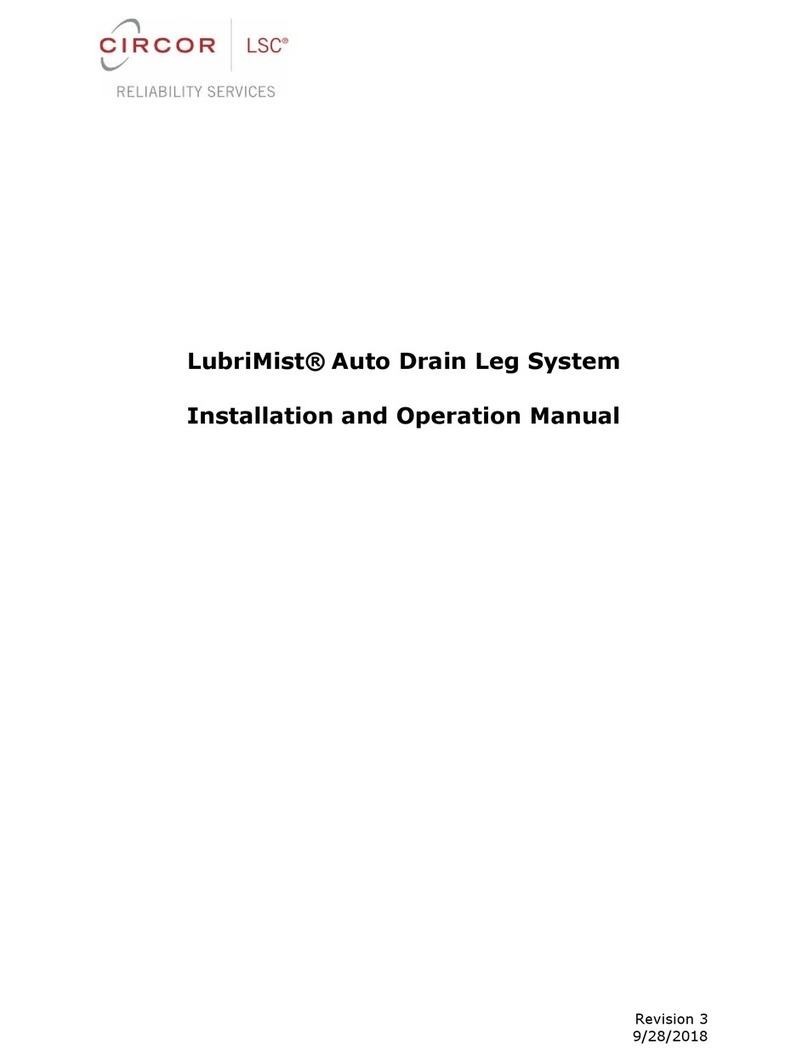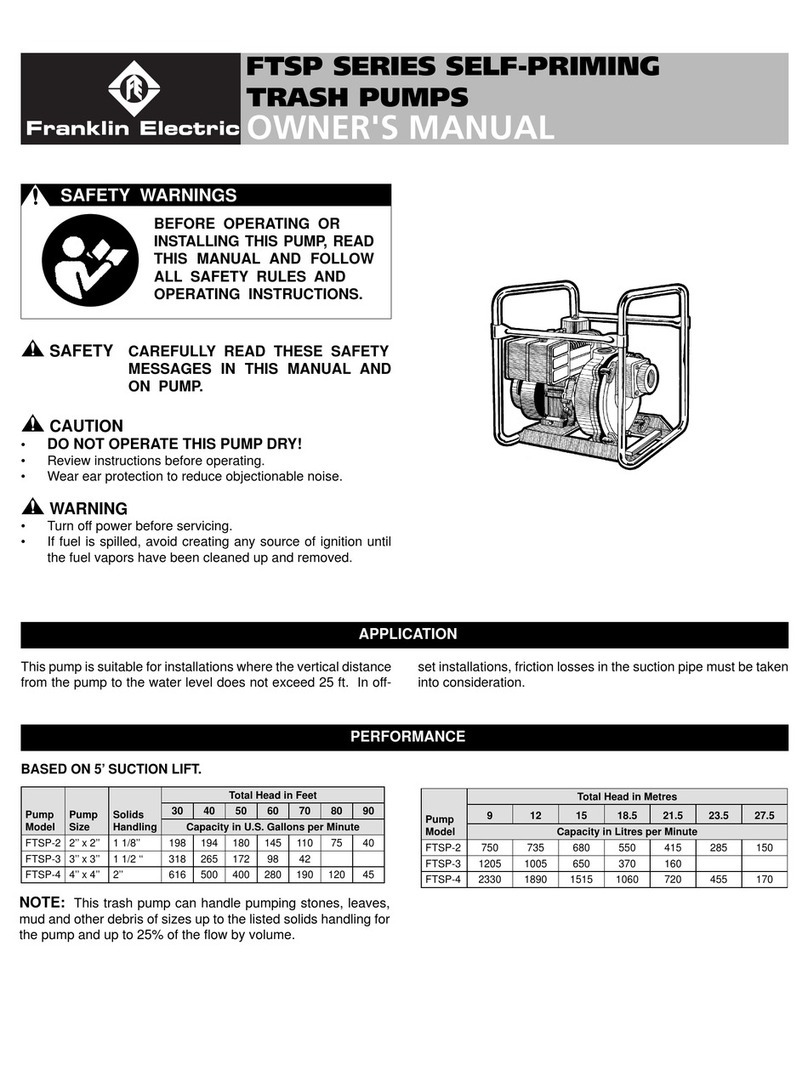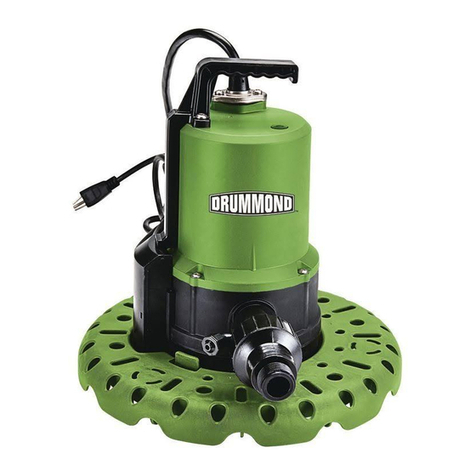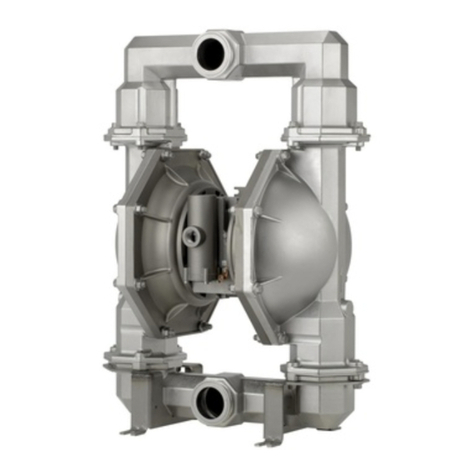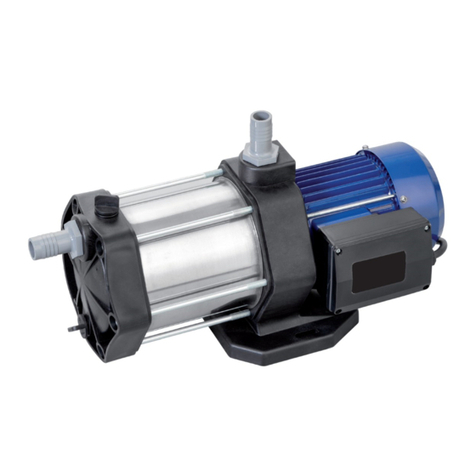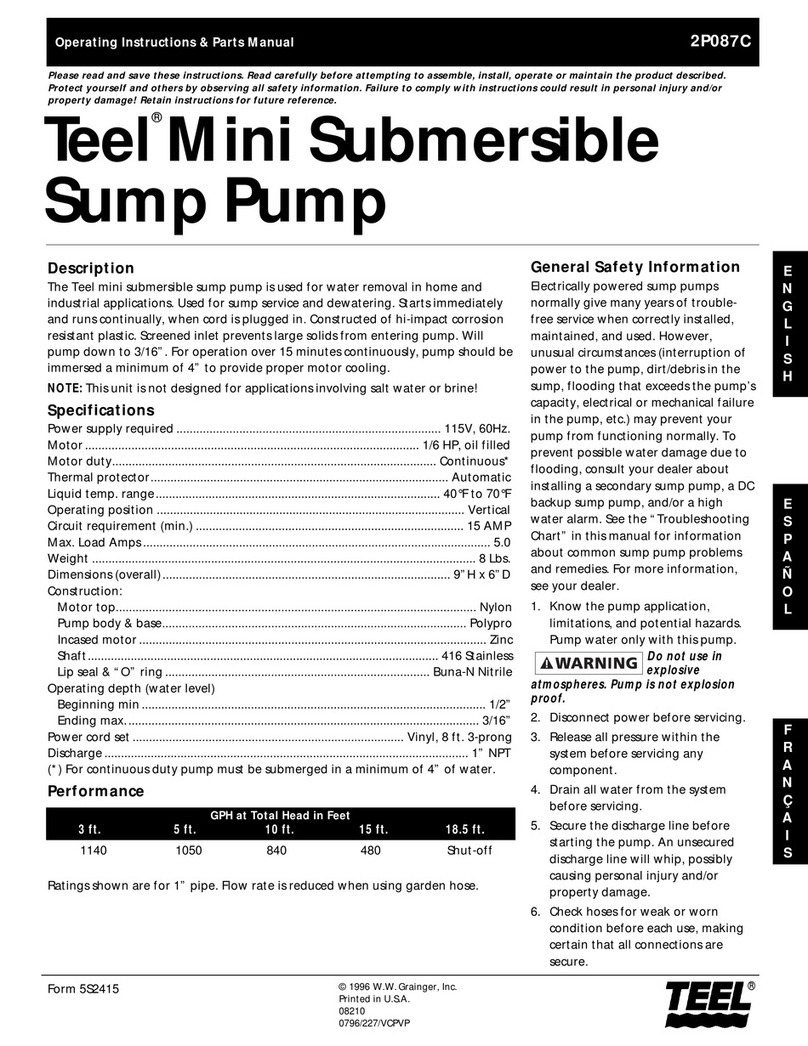Vogelsang VX186Q User manual

2018-01-25
*WBV.PU.002.EN VX186Q*
WBV.PU.002.EN VX186Q
V2.0
1/77
2018-01-25
*WBV.PU.002.EN VX186Q*
WBV.PU.002.EN VX186Q V2.0
Operating Instructions
Rotary Lobe Pump
VX186Q

Issuer
2
WBV.PU.002.EN VX186Q V2.0
Original operating instructions
Issuer
Issuer
Vogelsang GmbH & Co. KG
Holthöge 10-14
49632 Essen/Oldb.
Phone: +49 54 34 83 0
Fax: +49 54 34 83 10
www.vogelsang.info
info@vogelsang.info
In the absence of express, written authorisation from the issuer, the reproduction or partial reproduction of
this document in any form is prohibited.
We reserve the right to make technical modifications to the diagrams and information presented in this
document in the event that such modifications become necessary for the enhancement of the machine.
© 2018 Vogelsang GmbH & Co. KG
Registered trademarks of Vogelsang
In selected countries, Vogelsang®, RotaCut®, HiFlo®, ACC®, CFC®, BioCrack®, XTill®, EnergyJet®, BioCut®,
CC-Serie®, PreMix®, ProTerra®, VarioCrop®and XRipper®are registered trademarks of Vogelsang GmbH &
Co. KG, Essen/Oldb., Germany.
All rights reserved, including graphics and images.
The registered trademarks are not always designated with an ®symbol in this document.

Table of contents
WBV.PU.002.EN VX186Q V2.0
3
Dear customer,
in every one of our products, you will see the entirety of our competence and our power of innovation at
work. Each product is developed and built so that you can work more successfully.
We call it quite simply: ENGINEERED TO WORK
If you want to know more about our company or put forward requests or suggestions, a wealth of information
can be found at www.vogelsang.info
Table of contents
Issuer .................................................................................................................................................................2
Table of contents..............................................................................................................................................3
1User information.....................................................................................................................................6
1.1 Using the operating instructions.......................................................................................................... 6
1.2 Presentation convention...................................................................................................................... 6
1.3 Explanation of symbols ....................................................................................................................... 7
1.4 Machine versions described here ....................................................................................................... 9
2EC declaration ......................................................................................................................................10
3Specifications .......................................................................................................................................11
3.1 Material description for rotary lobes.................................................................................................. 12
3.2 InjectionSystem................................................................................................................................. 13
3.3 Name plate........................................................................................................................................ 14
4Safety.....................................................................................................................................................15
4.1 Operator’s responsibilities................................................................................................................. 15
4.2 Personnel qualification...................................................................................................................... 16
4.3 Fields of activity................................................................................................................................. 16
4.4 Intended use...................................................................................................................................... 17
4.5 General safety notes......................................................................................................................... 17
4.6 Main switch, maintenance and repair switch .................................................................................... 18
4.6.1 EMERGENCY STOP shutdown (main switch)............................................................................ 18
4.6.2 Maintenance and repair switch.................................................................................................... 18
4.7 Warning and safety stickers on the machine .................................................................................... 19
5Transport, storage................................................................................................................................20
5.1 Transport........................................................................................................................................... 20
5.2 Storage.............................................................................................................................................. 21
6Assembly...............................................................................................................................................22
6.1 Installation in pipe systems............................................................................................................... 22
6.2 Pipes ................................................................................................................................................. 23
6.3 Direction of flow................................................................................................................................. 25
6.3.1 Pump with motor drive................................................................................................................. 25
6.3.2 Pump with PTO drive................................................................................................................... 25
6.3.3 Pump systems ............................................................................................................................. 26
6.3.4 Pumps with InjectionSystem........................................................................................................ 26
6.4 Pump connection............................................................................................................................... 27
6.5 Base, support surface for machine ................................................................................................... 28
6.5.1 Machine without base.................................................................................................................. 28
6.5.2 Machine and motor on base C (with coupling) ............................................................................ 28
6.5.3 Coupling orientation..................................................................................................................... 29
6.5.4 Coupling guard............................................................................................................................. 30
6.5.5 Machine and motor on base B (belt drive)................................................................................... 31
6.5.6 Machine on hand cart .................................................................................................................. 31
6.5.7 Machine on three-point base....................................................................................................... 31
6.6 Drive.................................................................................................................................................. 32
6.6.1 Electric drive ................................................................................................................................ 32

Table of contents
4
WBV.PU.002.EN VX186Q V2.0
6.6.2 Hydraulic drive............................................................................................................................. 34
6.6.3 Combustion engine drive............................................................................................................. 36
6.6.4 PTO drive..................................................................................................................................... 37
6.7 System control................................................................................................................................... 38
7Start-up..................................................................................................................................................39
8Maintenance..........................................................................................................................................41
8.1 Buffer chamber.................................................................................................................................. 41
8.1.1 Pressurisable buffer fluid tank ..................................................................................................... 42
8.1.2 Depressurised quenching fluid tank ............................................................................................ 45
8.1.3 Pressure valve............................................................................................................................. 46
8.1.4 Plugs............................................................................................................................................ 46
8.1.5 Buffer or quenching fluid - type.................................................................................................... 47
8.1.6 Buffer or quenching fluid - quantity.............................................................................................. 47
8.1.7 Buffer or quenching fluid - inspection and change ...................................................................... 47
8.2 Draining and cleaning the buffer chamber........................................................................................ 48
8.3 "Dry buffer chamber" sealing system................................................................................................ 49
8.4 Circulation system on the cartridge mechanical seal........................................................................ 50
8.5 Gearbox............................................................................................................................................. 51
8.5.1 Gear oil - grade............................................................................................................................ 51
8.5.2 Gear oil - quantity ........................................................................................................................ 51
8.5.3 Gear oil –inspection and change................................................................................................ 51
8.6 Greasing of sealing prechamber....................................................................................................... 53
8.7 Oils and lubricants............................................................................................................................. 54
9Repair ....................................................................................................................................................57
9.1 Conversion and spare parts.............................................................................................................. 57
9.2 Opening the Q cover......................................................................................................................... 58
9.3 Rotary lobe change........................................................................................................................... 59
9.4 How the lobe puller works................................................................................................................. 62
9.5 Change of wear plates ...................................................................................................................... 65
9.6 Change of cartridge mechanical seal................................................................................................ 66
9.7 Closing the Q cover........................................................................................................................... 68
9.8 Adjusting of pump housing segments............................................................................................... 68
9.9 Reducing the starting torque............................................................................................................. 69
10 Troubleshooting ...................................................................................................................................70
10.1 Troubleshooting........................................................................................................................... 70
10.2 Help.............................................................................................................................................. 70
11 Putting out of operation and disposal................................................................................................72
12 Maintenance plan .................................................................................................................................74
12.1 Maintenance instructions............................................................................................................. 74
12.2 Maintenance intervals.................................................................................................................. 74
12.3 Additional maintenance intervals for pumps with belt drive......................................................... 75
13 Service plan ..........................................................................................................................................76

Table of contents
WBV.PU.002.EN VX186Q V2.0
5
Table of figures
Fig. 1: Flow direction with InjectionSystem...................................................................................................... 13
Fig. 2: Name plate ........................................................................................................................................... 14
Fig. 3: Positions of the warning and safety labels ........................................................................................... 19
Fig. 4: Transport aids....................................................................................................................................... 20
Fig. 5: Installation variants............................................................................................................................... 22
Fig. 6: Long suction lines................................................................................................................................. 24
Fig. 7: Flow direction with motor drive............................................................................................................. 25
Fig. 8: Flow direction with PTO drive............................................................................................................... 25
Fig. 9: Flow direction with pump units ............................................................................................................. 26
Fig. 10: Tightening sequence .......................................................................................................................... 27
Fig. 11: Orientation procedure......................................................................................................................... 29
Fig. 12: Coupling guard ................................................................................................................................... 30
Fig. 13: Vent screw on the gearbox (removing the seal)................................................................................. 33
Fig. 14: Buffer fluid tank................................................................................................................................... 42
Fig. 15: Filling/draining the buffer chamber..................................................................................................... 43
Fig. 16: Pump with quenching fluid tank.......................................................................................................... 45
Fig. 17: Pump with pressure valve .................................................................................................................. 46
Fig. 18: Installation example - dry buffer chamber .......................................................................................... 49
Fig. 19: Flushing operation.............................................................................................................................. 50
Fig. 20: Gear oil change .................................................................................................................................. 52
Fig. 21: Opening/closing the Q cover .............................................................................................................. 58
Fig. 22: Rotary lobe change............................................................................................................................. 59
Fig. 23: HiFlo and HiFloplus arrangement....................................................................................................... 60
Fig. 24: Lobe puller components ..................................................................................................................... 62
Fig. 25: Components of lobe puller with stabilisation ...................................................................................... 63
Fig. 26: Hooking puller arm into lobe............................................................................................................... 64
Fig. 27: Pulling out the lobes with lobe puller.................................................................................................. 64
Fig. 28: Installation position of the curved wear plates.................................................................................... 65
Fig. 29: Cartridge mechanical seal on the gearbox......................................................................................... 67
Fig. 30: Adjustment of pump housing segments ............................................................................................. 68
Relevant documents
•Dimension sheet / drawing
•Characteristic line
•EC declaration of conformity
Optional:
•Technical information on drive system
•Technical information on safety devices
Please read and adhere to the information and instructions in the relevant documents.

User information
6
WBV.PU.002.EN VX186Q V2.0
1 User information
1.1 Using the operating instructions
These instructions contain information concerning operating elements, handling, start-up and maintenance
and repair work, as well as the relevant specifications.
The operating instructions are a component of the machine.
IMPORTANT
READ CAREFULLY BEFORE USE
Read the operating instructions thoroughly. All of the points presented in these instructions must be
understood and observed by those persons responsible for the installation, operation, maintenance and
repair of the machine.
Vogelsang does not accept any liability for damage resulting from failure to comply with these operating
instructions.
KEEP FOR FUTURE REFERENCE
Please keep the manual ready at hand to ensure easy access to the necessary information at all times.
Additional copies of the manual are available upon request.
1.2 Presentation convention
Presentation
Meaning
•
Listing
Sublisting
1.
2.
Carry out these actions in the described sequence
Fig. "Caption"
Reference to a figure for additional information
Chapter "Chapter heading"
Reference to a chapter for additional information
Table "Table caption"
Reference to a table for additional information
"Relevant document"
Reference to a document for additional information
Technical support
Contact our technical support

User information
WBV.PU.002.EN VX186Q V2.0
7
1.3 Explanation of symbols
The following symbols and signal words are used in this manual:
1If personal protective equipment is needed to work with and on the machine, that is indicated
by the following symbols:
Indicates that protective gloves must be worn for subsequent tasks.
Indicates that protective goggles must be worn for subsequent tasks.
Indicates that safety shoes must be worn for subsequent tasks.

User information
8
WBV.PU.002.EN VX186Q V2.0
2This symbol draws attention to the use of tools:
Tools, mounting devices and resources required for the following work tasks.
3General notices and information about environmental protection are marked by these symbols:
NOTE
Refers to further information and useful notes.
ENVIRONMENTAL PROTECTION
Refers to measures to be observed to prevent damage to the environment.
4Safety notes are introduced by these symbols and words:
CAUTION
Refers to a dangerous situation in which failure to comply with the safety note could result in light injuries.
WARNING
Refers to a dangerous situation in which failure to comply with the safety note could result in death or serious
injuries.
DANGER
Refers to an (extremely) dangerous situation in which failure to comply with the safety note will result in
death or serious injuries.
RISK OF ELECTRIC SHOCK
Touching live parts leads to dangerous electrocution.
This can result in electric shock, burns or death.
ATTENTION
Refers to possible damage to machinery or property as a result of failure to comply with this note.

User information
WBV.PU.002.EN VX186Q V2.0
9
1.4 Machine versions described here
In Chapter "Installation", the following optional machine versions are described:
Machine version
Chapter reference
•With or without pump connectors
Chapter "Pump connector"
•On a base or without a base
Chapter "Base, support surface for
machine"
•With the following drive options:
Chapter "Drive"
Electric drive
Hydraulic drive
PTO drive
Combustion engine drive
•With or without system control
Chapter "System control"
The machines listed in these operating instructions are subject to the
Machinery Directive (2006/42/EC), see sample printout in Chapter "EC declaration".

EC declaration
10
WBV.PU.002.EN VX186Q V2.0
2 EC declaration
(sample printout)
EC Declaration of conformity
According to Machinery Directive 2006/42/EC; annex II A
Manufacturer: Vogelsang GmbH & Co. KG
Holthöge 10-14
49632 Essen/Oldb.
GERMANY
We hereby declare that the machine described below meets the basic health and safety requirements of the
Machinery Directive 2006/42/EC in its design and construction and in the version marketed by us.
If a change is made to the machine without our agreement, this declaration loses its validity.
Product: Rotary lobe pump
Applied harmonised standards:
DIN EN ISO 12100:2010
DIN EN 809:2012
The person or entity authorised to compile the technical documentation is:
Vogelsang GmbH & Co. KG; Holthöge 10-14; 49632 Essen/Oldb., GERMANY
49632 Essen, 2017-07-03
Harald Vogelsang (Managing Director)

Specifications
WBV.PU.002.EN VX186Q V2.0
11
3 Specifications
VX186Q
series
Max. rotation speed: 600 min-1
Max. differential
pressure**
Theoretical
torque***
Displacement
Theoretical volume
flow*
Size
[l]
[l/min]
[m3/h]
[bar]
[Nm]
92
3.57
2142
129
10
675
130
5.05
3030
182
10
940
184
7.15
4290
257
8
1090
260
10.10
6060
364
5
1035
368
14.29
8574
514
3
970
390
15.15
9090
545
3
1020
* All values refer to the theoretical volume flow. The actual volume flow is lower; it depends on the
operating conditions in each case.
** Valid only for short operation times. For continuous operation, please contact our service department
.
The service life of the lobes is reduced by high temperatures, especially in combination with high
pressure. Observe the material-specific differential pressure limits Notice.
*** Theoretical operating torque with max. differential pressure and water, designed for NBR elastomers.
ATTENTION
Speed reduction for highly viscous media
When using the pump for a highly viscous medium, the pump speed must be reduced according to the
material's viscosity, to prevent the intake flow from breaking off on the suction side (cavitation protection).
Material-specific differential pressure limits
With some materials, premature wear is likely if the pump pressure is too high. Observe the following
material-specific differential pressure limits.
FPM lobes: max. 6 bar
Steel or stainless steel lobes: Please consult our service department
Maximum free passage: Ø 61 mm
Weights and dimensions
For the machine's weight and dimension specifications, see "Dimension sheet"

Specifications
12
WBV.PU.002.EN VX186Q V2.0
3.1 Material description for rotary lobes
Marking on
the rotary
lobe
Material
Elastomer-based
Resistant
up to
Pump medium
Characteristics
NBR
NBR
Nitrile butadiene
rubber
80 °C *
Sewage sludge,
petrol,
oil, grease, diesel oil,
spindle oil
Oil-resistant
NBR
NBR, white
Nitrile butadiene
rubber
80 °C *
Oil, butter, linseed
and olive oil, lard
Food grade
SBR
SBR
Styrene butadiene
rubber
60 °C
Liquid manure
Wear-resistant
SL
EPDM-SL
(EPDM-
Sewage-Line)
Ethylene
propylene
diene M-class
rubber
80 °C *
Water, liquid manure,
sewage sludge,
biogas substrate
Not oil and grease
resistant,
water resistant,
steam resistant
AL
EPDM-AL
(EPDM-Aqua-
Line)
Ethylene
propylene
diene M-class
rubber
80 °C *
Drinking water
Drinking water
approved **,
not oil or grease-
resistant,
water-resistant,
steam-resistant
EPDM
EPDM, white
Ethylene
propylene
diene M-class
rubber
80 °C *
Water, mash, slightly
acidic products
Food grade
PU
PU
(Werobust )
Polyurethane
vulcanised
50 °C
Abrasive medium
Wear-resistant
PUR
PUR
Polyurethane
cast
80 °C
Abrasive medium
Highly wear-resistant
CSM
CSM
(Hypalon)
Chloro-sulfonyl
polyethylene
rubber
80 °C *
Petrol, oil, acids,
alkali solutions
Wear-resistant,
acid-resistant and
alkali-resistant
FPM
FPM
Fluorocarbon
gum
80 °C *
Solvents, salt water,
oil, petrol, acids
Acid-resistant and
alkali-resistant
Steel lobes
(pure material)
1.4571
150 °C
200 °C*
Pure medium
Chemistry
High temperatures,
high chemical
resistance
Steel rotary
lobes
(pure material)
C45 nitrided
150 °C
200 °C*
Pure medium
petrochemical
High temperatures,
chemical resistance
Table: Material description
*consult Vogelsang in the event of the combination of "high differential pressure and high temperatures"
** drinking water approvals: KTW, DVGW-Arbeitsblatt, W 270, WRAS, BELAQUA
Please consult us
•If you require combinations with high differential pressure and high temperatures –(see * in Table
"Material description").
•With solid material lobes with media containing foreign matter
•If you should discover discrepancies or if precise specifications have not been provided for the
medium

Specifications
WBV.PU.002.EN VX186Q V2.0
13
3.2 InjectionSystem
InjectionSystem refers to a special type of pump housing segment for filling optimisation.
The InjectionSystem injects foreign matter directly into the delivery spaces in the pump chamber as they
open, conveying them on to the pump outlet (for improved foreign matter protection).
In addition, an InjectionSystem also improves the internal sealing of the pump.
Injection S(Symmetrical InjectionSystem)
The filling optimisation structure is located at the pump inlet and at the pump outlet. This allows flow in either
direction.
Injection S provides improved pump sealing (with more seal lines), thus allowing higher volumetric efficiency.
Injection A (Asymmetrical InjectionSystem)
The filling optimisation structure is located at the pump inlet only. Therefore, the direction of flow is set in
advance. A brief reverse operation is possible.
Injection A provides improved foreign matter protection with low-viscosity fluids and a high proportion of
foreign matter.
Injection S
Injection A
Fig. 1: Flow direction with InjectionSystem

Specifications
14
WBV.PU.002.EN VX186Q V2.0
3.3 Name plate
Fig. 2: Name plate
The name plate (1) contains the following details:
QR-Code
Product
Design (series)
Serial number
Year of
manufacture
Weight
Part number
Address of Vogelsang, GERMANY

Safety
WBV.PU.002.EN VX186Q V2.0
15
4 Safety
This section gives you an overview of important safety aspects needed to ensure optimum protection of
personnel and to ensure safe and trouble-free operation.
Failure to comply with the instructions and safety information specified in this manual may result in serious
hazards.
In the event of any abnormalities and/or signs relating to the safety of the product supplied by Vogelsang,
please contact us without delay via:
produktsicherheit@vogelsang.info
4.1 Operator’s responsibilities
The machine is used commercially. The operator of the machine is therefore subject to the statutory
occupational safety regulations.
In addition to the safety information provided in this manual, the relevant safety, accident prevention and
environmental protection requirements for the area in which the machine is used must be complied with.
The following applies in particular:
•The operator shall ensure that all persons who handle the machine have read and understood this
manual. If necessary, the operator shall train personnel and inform them of possible hazards. To help
keep track of training, we recommend creating a training log.
•The operator shall clearly regulate and define responsibilities for transport, installation, start-up,
operation, maintenance, repair, cleaning, troubleshooting, shutdown and disposal.
•The operator must take appropriate safety measures as required by the nature of the media, such as
acidic or alkaline media, or high media temperatures > 60 °C.
The operator is responsible for ensuring that the machine is always in perfect technical condition.
The following therefore applies:
•The operator shall ensure that maintenance intervals described in this manual are complied with and
are documented in the service plan.
•The operator shall have all safety devices checked at regular intervals to ensure that they are fully
functioning and complete.

Safety
16
WBV.PU.002.EN VX186Q V2.0
4.2 Personnel qualification
Instructed person
Has been instructed by the operator to perform the tasks for which the instructed person is responsible and
has been informed of possible hazards in the event of improper behaviour.
Qualified technical personnel
Are able, due to their specialist training, skills, experience and knowledge of the relevant regulations, to
perform the work for which they are responsible, and are able to identify and avoid possible hazards
independently.
Qualified electrician
Is able, due to his or her specialist training, skills, experience and knowledge of the relevant standards and
regulations, to perform work on electrical systems, and is able to identify and avoid possible hazards
independently.
Handling the machine improperly can result in serious injuries and property damage.
For this reason, all activities must be performed by qualified personnel only.
Only persons who can be expected to perform their work reliably shall be permitted as personnel. Persons
whose ability to respond is impaired, for example due to drugs, alcohol or medication, are not approved.
4.3 Fields of activity
•The activities described in this manual may be performed by instructed persons unless explicit
mention is made of a special qualification that is necessary.
•If activities may only be performed by qualified technical personnel, this fact will be clearly stated in
this manual. Safety devices may only be connected and checked by qualified technical personnel.
•Electrical work and work on the electrical system may only be performed by qualified electricians.
Vogelsang must always be consulted prior to any system-specific activities that are not described in this
manual.
Training in the activities described in this manual may be provided by Vogelsang on request.

Safety
WBV.PU.002.EN VX186Q V2.0
17
4.4 Intended use
The Vogelsang rotary lobe pump (hereafter referred to as "pump" or "machine") is a self-priming positive
displacement pump for pumping fluids ranging from water-like to highly viscous (hereafter referred to as
"medium").
The medium may be chemically neutral, acidic or alkaline. It may be loaded with solid particles and/or gas.
The pump is designed to pump the medium specified by the customer.
For a different medium or if the pump is not designed for a particular application, it has to be checked
whether the characteristics of the pump are suitable for the pump medium in terms of the material and fluid
group. In some cases the pump or the pump connectors must be reconfigured.
In addition to these specifications, the specifications in Chap. "Specifications" must be complied with as
well.
Any other use is contrary to the intended purpose. Vogelsang is not liable for any damage resulting from
incorrect use.
Foreseeable misuse:
The machine is NOT intended for the following uses:
•Potentially explosive atmospheres
•Operation subject to cavitation
•Use in the food industry without checking the specific hygiene requirements for the pump
4.5 General safety notes
WARNING
Risk of injury (catching, crushing, collision) due to rotating rotary lobes if the machine starts up
unexpectedly!
Before starting maintenance and repair work (opening covers, disassembling connectors) and before
troubleshooting, switch the machine off and secure it against being switched on again.
WARNING
Risk of injury from medium escaping under high pressure!
If the maximum differential pressure is exceeded, machine parts may burst and medium may spray out.
•The maximum differential pressure must not be exceeded Chap. "Specifications".
•Observe and implement the recommendations in Chap. "Installation in pipes".
•Protect the machine or system against overpressure. For example, the following monitoring devices
can be used:
A current limiter on the motor
A pressure relief valve
Cut-off with a pressure control switch
An overload coupling

Safety
18
WBV.PU.002.EN VX186Q V2.0
WARNING
Skin and eye irritation caused by contact with hazardous working materials or media!
All work on the machine can lead to contact with working materials or media.
•Personnel must wear suitable protective clothing.
•The operator must inform his or her staff about any potentially hazardous substances in working
materials or media.
CAUTION
Risk of burning due to exposed host surfaces!
If the medium temperature is greater than 60 °C or the pump experiences dry running, the pump housing,
the connectors or the pipes can become very hot.
At high speeds or high differential pressure, the gearbox housing can also become very hot.
•Avoid (accidental) contact with hot surfaces.
•Avoid dry running of the pump, e.g. by means of dry running protection via
Temperature monitor
Level measurement
Flow measurement
ATTENTION
Risk of frost!
To protect the pump against damage caused by frozen medium, drain it when there is a risk of frost.
•Drain the pump by running the pump in either direction (forward or reverse), until all liquid is drained
out of the pump. You can use drain cocks in the connectors to do this.
•For complete emptying of the pump chamber, remove the Q cover, Chapter "Opening the Q cover".
•Before start-up, refill with fluid.
4.6 Main switch, maintenance and repair switch
All-pole disconnection must be provided for the main switch and maintenance and repair switch.
4.6.1 EMERGENCY STOP shutdown (main switch)
For shutdown in the event of an emergency, an emergency stop must be present and freely accessible at all
times.
4.6.2 Maintenance and repair switch
To safely exclude the possibility of unexpected machine start-up, a maintenance and repair switch must be
installed in the immediate vicinity of the electric drive so that the electrical power can be safely isolated for
maintenance purposes.
The maintenance and repair switch must be secured in its OFF position to prevent it being switched back on
again, using a padlock for example.
WARNING
Qualified technical personnel must connect and check the safety devices on a regular basis for proper
function, especially after performing maintenance and repair work and before start-up.

Safety
WBV.PU.002.EN VX186Q V2.0
19
4.7 Warning and safety stickers on the machine
Warning and safety stickers on the machine
•provide important information for the safe operation of the machine. Observing the stickers is for the
safety of persons who work with and on the machine.
•must remain legible, remove any contamination, if required.
•may not be removed and must be replaced immediately if damaged or lost.
1
VAU.133
2
VAU.138
3
VAU.115
Fig. 3: Positions of the warning and safety labels
(example only, the position of the stickers can vary depending on the size)
VAU.133
Before machine start-up, operating instructions must be
read!
VAU.138
Buffer or quenching fluid tank
VAU.115
(Only used for pumps with a mechanical
seal consisting of the material combination
SiSiC-SiSiC)
(To avoid adhesion of the mechanical seal faces this pump needs to be
rotated (at least one revolution) every two months when not in service!)

Transport, storage
20
WBV.PU.002.EN VX186Q V2.0
5 Transport, storage
5.1 Transport
Fig. 4: Transport aids
WARNING
Risk of crushing or concussion due to falling machine!
The machine may start to sway or topple when it is transported, loaded or set down. To ensure safe
transport, note the following:
•Loading and transporting may only be carried out by qualified technical personnel. In other words: The
operator of a crane or forklift must be able to show an appropriate authorisation.
•Cranes and hoists as well as forklifts must be designed for the weight of the transport units.
•Standing under raised loads is prohibited. Have people leave the danger area.
•Permissible transport options for the machine: suspended, or bolted onto a Euro-pallet.
•In the case of suspended transport of the machine:
Remove the buffer fluid tank or quenching fluid tank before transport.
Use the lifting eye bolts and/or lifting lugs fitted for hoisting gear and securely fasten the lifting
tackle.
Use the lifting eye bolts on the machine only for lifting and transporting the machine without
attachments or system components (e.g. motor, connectors or base).
Table of contents
Other Vogelsang Water Pump manuals

Vogelsang
Vogelsang VX136Q User manual
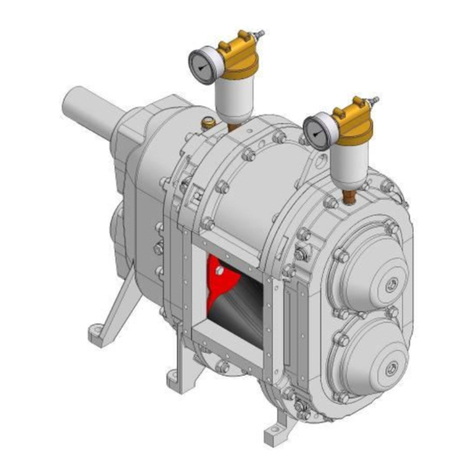
Vogelsang
Vogelsang VX100Q User manual
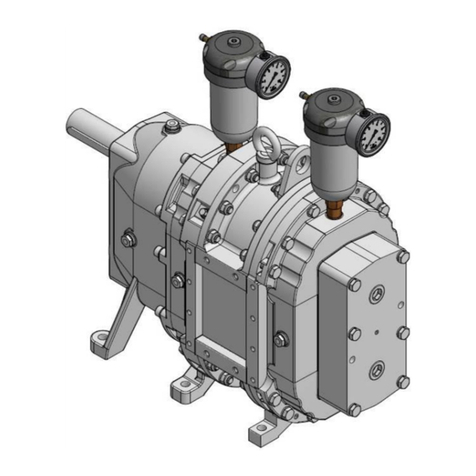
Vogelsang
Vogelsang VX136QD User manual
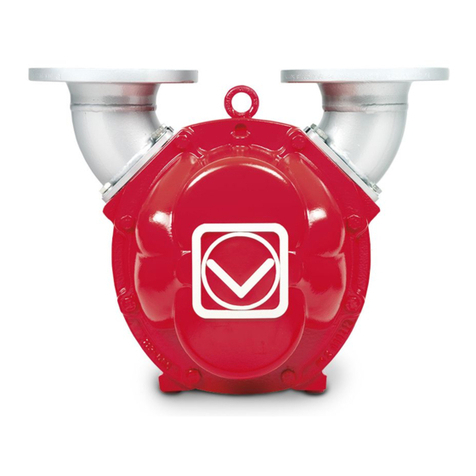
Vogelsang
Vogelsang IQ112 Series User manual
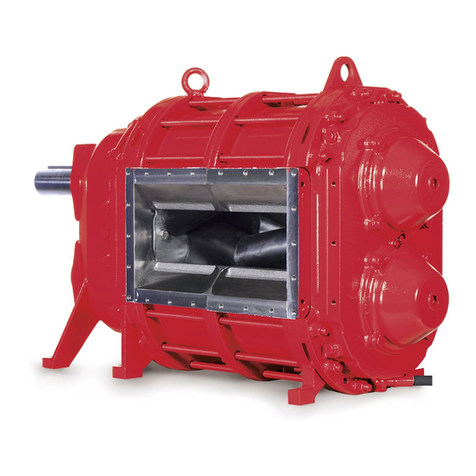
Vogelsang
Vogelsang VX136Q..QD..QDM2 Series User manual
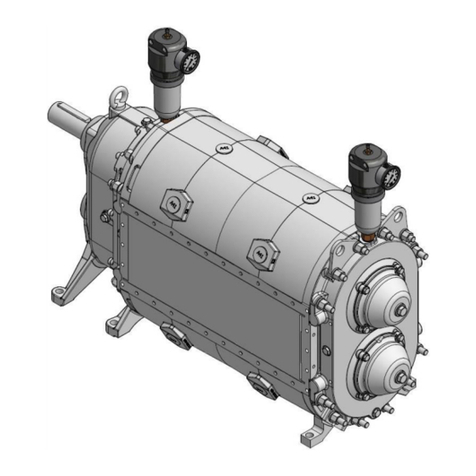
Vogelsang
Vogelsang VX215QD User manual
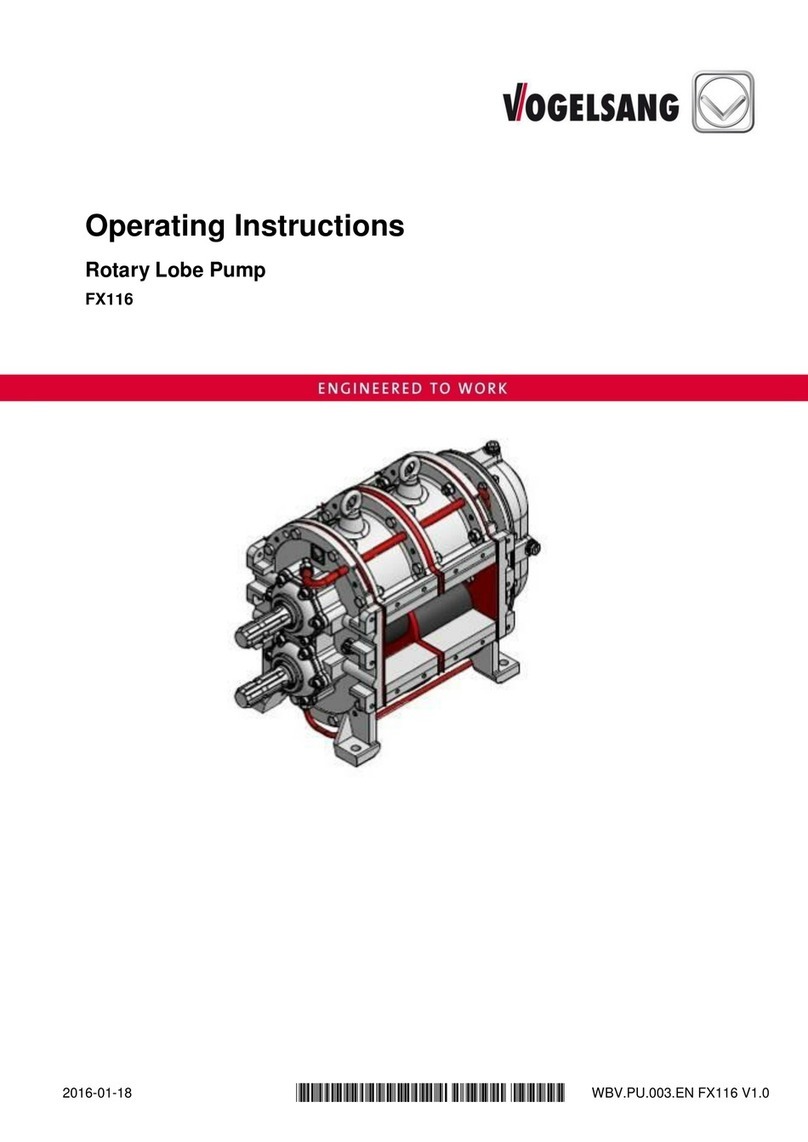
Vogelsang
Vogelsang FX116 User manual

Vogelsang
Vogelsang VX186QD User manual
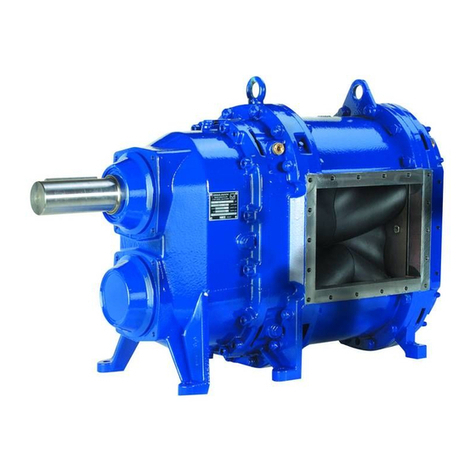
Vogelsang
Vogelsang VX Q Series User manual
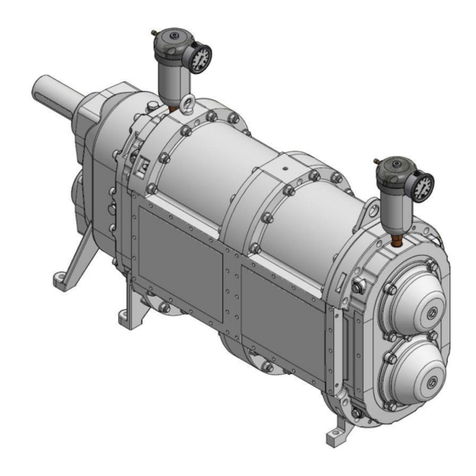
Vogelsang
Vogelsang VX186QDM2 User manual

